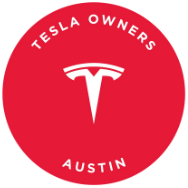Tesla’s long-awaited promise of launching fully self-driving cars may finally be coming to fruition. CEO Elon Musk announced that the automaker’s first true “unsupervised” self-driving system will be launched in June, starting in Austin as a paid ride-hailing service. This development marks a significant milestone in Tesla’s journey towards achieving fully autonomous vehicles.
Musk revealed during the fourth-quarter 2024 earnings call that Teslas will be operating in Austin without any drivers inside the vehicles. This bold move signifies a major step towards realizing the vision of autonomous ride-hailing services. The launch will be gradual, with Tesla-owned vehicles serving as part of a pilot program to ensure the system’s safety and efficiency before expanding further.
The initial rollout in Austin will be followed by the introduction of the self-driving service in several other U.S. cities this year, with a nationwide rollout planned for next year. Musk aims to make this service available in most countries by the end of 2026. However, given Musk’s history of setting ambitious timelines, delays should not come as a surprise.
One of the key advantages of Tesla’s autonomous system is its reliance on a generalized AI solution that does not require high-precision maps of specific locations. This approach sets Tesla apart from competitors like Waymo, which heavily rely on detailed mapping for their autonomous operations. Musk’s dismissal of Lidar technology in favor of camera-based systems further showcases Tesla’s unique approach to self-driving technology.
Despite the optimism surrounding Tesla’s self-driving capabilities, the company’s thesis for automated driving remains unproven. Critics argue that achieving full autonomy using AI and cameras alone may be a daunting task, given the complexity of real-world driving scenarios. Musk’s track record of setting ambitious deadlines for full self-driving capabilities further adds to the skepticism surrounding Tesla’s autonomous technology.
Nevertheless, Tesla’s upcoming launch of an unsupervised self-driving service in Austin marks a significant step towards achieving fully autonomous vehicles. The company’s ability to deliver a seamless and safe autonomous driving experience will be closely monitored by industry experts and consumers alike. The ultimate question remains: when will Tesla finally deliver on its promise of fully self-driving cars?
In conclusion, Tesla’s upcoming launch of an unsupervised self-driving service in Austin represents a major milestone in the evolution of autonomous vehicles. Musk’s ambitious vision for fully self-driving cars is inching closer to reality, with the June rollout set to test the boundaries of autonomous technology. As Tesla continues to push the boundaries of innovation, the world eagerly awaits the next chapter in the development of self-driving cars.

